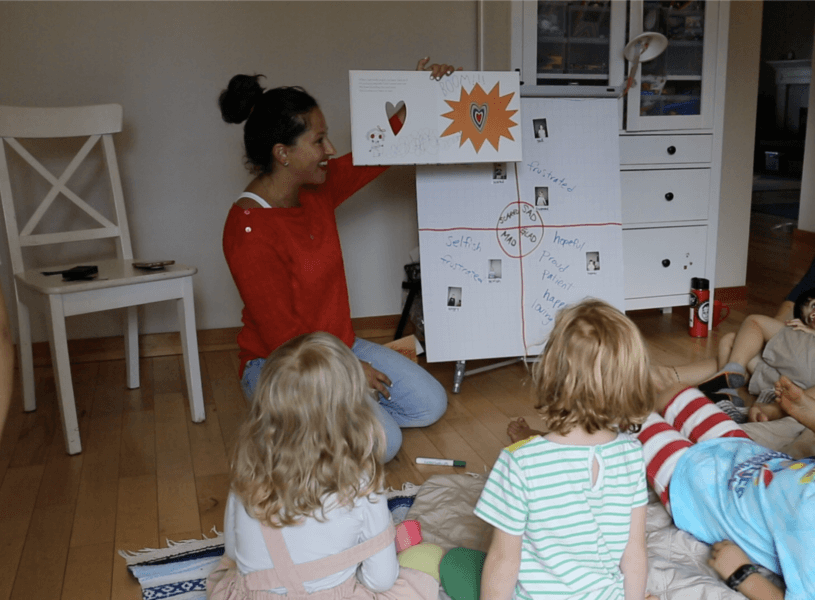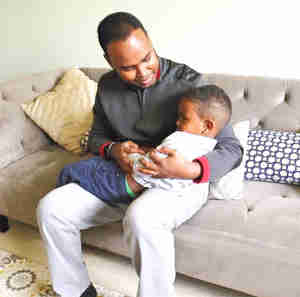Feelings, the First Foreign Language I Learned as a Parent
I was visiting a friend last week and we got to talking about Family Meetings (spend more than an hour with me and this family meeting thing is likely to come up).
He rolled his eyes and said, “I don’t really like talking about feelings. That sounds painful.” “But it’s only 15 minutes!” I replied. “Even 5 minutes is too much,” he laughed.
I realize that as a “feelings teacher” this does not come naturally to most parents.
But if it is so hard for the grown ups then how are we going to teach our kids?
How will we practice? How are we going to teach them to name their feelings, express themselves clearly and assertively, and not internalize or explode their stress or negative emotions? When our children are scared, mad, or so sad, their irrational brain has taken over and is only able to yell, “Fight! Run away! Freeze!” We can guide our children into their “rational” brain by helping them feel safe and understood, while teaching them to name and express their feelings in positive ways.
My great aunt was raised bilingually in the early 1940’s. She often says, “you talk to your kids differently.” I am never quite sure if it is the difference in culture, time, language, or personality, but I did (and still do), starting when they were babies.
I said things like “it must feel cold and uncomfortable” when I was changing their diapers. Or “you are feeling hungry and tired,” when they were screaming their lungs out trapped in a carseat in traffic. As waddlers, I let them know when it was time to leave and where we would be going, guessing out loud that it would be hard to stop playing but that our next adventure would be just as fun. When my preschooler came home and told me she had been excluded from a game, I offered “Wow, you must have felt sad!” “No!” She retorted, “I felt left out!” Ouch. And great, all at the same time, you know? She gets it. She’s been practicing too, and listening, and absorbing the words through context as I have been practicing. Sometimes it’s uncomfortable, but I’ve seen the results and am committed.
Just like when we learn a foreign language, we need to jump in, practice, and be okay with not getting the accent right in the beginning.
We need to let go of what society tell us we can or can’t do (or feel). It is vulnerable to practice talking about feelings (Brene Brown– scary) so if that is too big a leap, then just start small. Kids are so forgiving and are great to practice with:
- Start sharing innocuous feelings. Ask questions to guess if you have their feelings right. You don’t have to be staring into each other’s eyes while you do this- make it less intense by chatting in the car, while pushing a swing or a stroller, or walking while holding hands.
- Read books about feelings. Children’s books are my favorite way to introduce any topic.
- Be honest with yourself. Tap into how you really are feeling in these crazy parenting moments, without judgment. Exhausted? Frustrated? Angry? Resentful? Elated? Content? All ok. All totally normal.
There is a misnomer that if we talk about feelings with our children it will make it worse—WRONG. Acknowledging the feeling releases it and tells the brain, “I am safe”.

One of my favorite Positive Discipline lessons that I teach and use with my own children is called “Sad, Mad, Glad, Scared.” You can use this to create your own vocabulary with yourself and little ones. Just create four sections of a paper with those headings, and as you come across feeling words in stories, or while talking, add it to the feelings bank, either with pictures, words, or preferably, both. Then refer to it with curiosity when emotions start to build. There are a million Pinterest feelings posters too, but the Star Wars one was most popular with my students.
If you really want to start at the beginning, practice on those babies. They won’t laugh at your accent or talk back. Talk about how YOU feel, guess how they may be feeling, and in the process you will find a fluency with this new language.
Next step? Use them when tantrums strike or for teaching about the brain, but for now…
go ahead and express yourself, one feeling at a time.
Looking for feelings books to read to your kids? Check out our children’s book list here.
*Sproutable is an Amazon affiliate and may receive commission from your purchase.





Comments